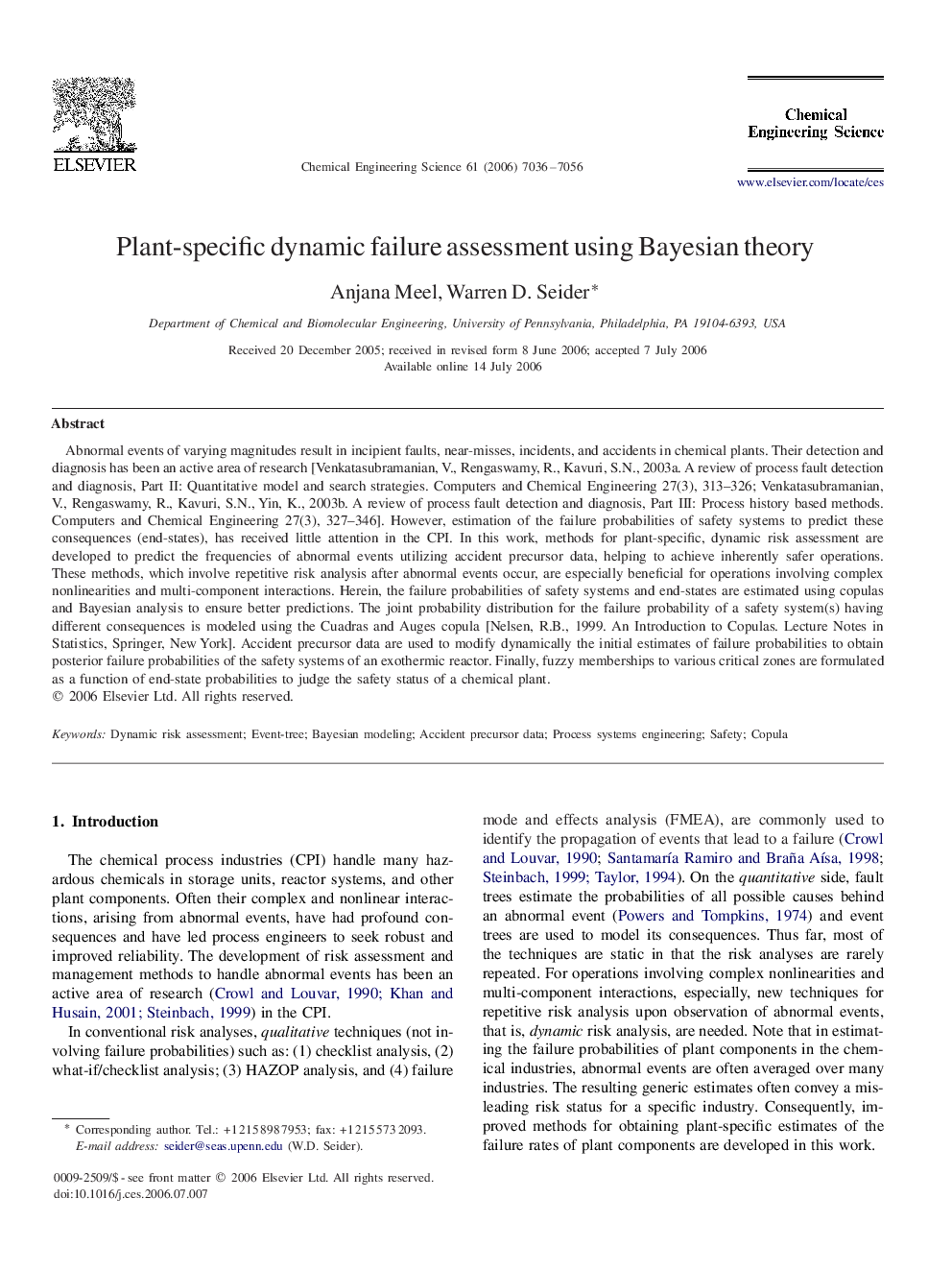| Article ID | Journal | Published Year | Pages | File Type |
|---|---|---|---|---|
| 159451 | Chemical Engineering Science | 2006 | 21 Pages |
Abnormal events of varying magnitudes result in incipient faults, near-misses, incidents, and accidents in chemical plants. Their detection and diagnosis has been an active area of research [Venkatasubramanian, V., Rengaswamy, R., Kavuri, S.N., 2003a. A review of process fault detection and diagnosis, Part II: Quantitative model and search strategies. Computers and Chemical Engineering 27(3), 313–326; Venkatasubramanian, V., Rengaswamy, R., Kavuri, S.N., Yin, K., 2003b. A review of process fault detection and diagnosis, Part III: Process history based methods. Computers and Chemical Engineering 27(3), 327–346]. However, estimation of the failure probabilities of safety systems to predict these consequences (end-states), has received little attention in the CPI. In this work, methods for plant-specific, dynamic risk assessment are developed to predict the frequencies of abnormal events utilizing accident precursor data, helping to achieve inherently safer operations. These methods, which involve repetitive risk analysis after abnormal events occur, are especially beneficial for operations involving complex nonlinearities and multi-component interactions. Herein, the failure probabilities of safety systems and end-states are estimated using copulas and Bayesian analysis to ensure better predictions. The joint probability distribution for the failure probability of a safety system(s) having different consequences is modeled using the Cuadras and Auges copula [Nelsen, R.B., 1999. An Introduction to Copulas. Lecture Notes in Statistics, Springer, New York]. Accident precursor data are used to modify dynamically the initial estimates of failure probabilities to obtain posterior failure probabilities of the safety systems of an exothermic reactor. Finally, fuzzy memberships to various critical zones are formulated as a function of end-state probabilities to judge the safety status of a chemical plant.
